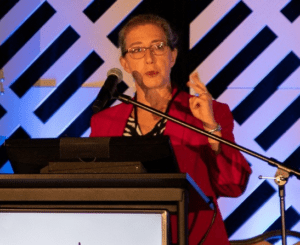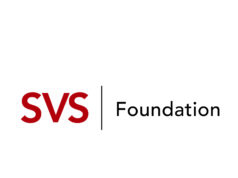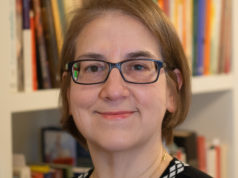
Linda Harris, MD, is a prolific attendee on the national and regional vascular meeting circuit, a noteworthy academic vascular surgeon with trainees and papers on the scientific session plate, and a curious questioner of new research offered up from the podium. A few years back, she started to take serious note of a recurring theme. Harris, the vascular surgery program director at University at Buffalo in Buffalo, New York, had spotted a problem with papers delving into issues and outcomes related to disparities.
“I was going to all the major national and regional meetings, and every meeting I would hear multiple papers saying women do worse, African Americans do worse, next paper, repeat, so we would hear the same mantra repeated over again that we acknowledge, ‘We have a problem with our patients,’ and yet we weren’t going anywhere,” she tells Vascular Specialist.
The time had come, Harris figured, for a dedicated forum, “a venue [where] we can dive deeper into what the problem is, and, better yet, what can we do to change the outcome so that the answer is not women do worse, Blacks do worse, etc.,” she says.
So was born the Women’s Vascular Summit, set to enter its 5th edition into the books. Harris, a course director and meeting founder, describes the meeting as having scored huge successes over the course, tackling both sides of its dual purpose: drilling down deeper on issues around women’s vascular health, and helping elevate and empower women vascular surgeons.
This year’s iteration sees the summit take another leap forward: the creation of three research grants for mid-level women vascular surgeons who are interested in aortic disease. Scheduled to take place at Harris’ own Jacobs School of Medicine in Buffalo from April 28–29, the 2023 edition of the meeting also coincides with special issues of both Seminars in Vascular Surgery and Annals of Vascular Surgery that are dedicated to women’s vascular health and set to be released during the year.
To be sure, Harris points out she is no critic of those regional or national vascular meetings. Rather, she feels they are not equipped to scale the enormity of the task of establishing the why of the disparate outcomes. “One of the problems is that when the books were written, the patients were considered to be White males, because we assumed women didn’t have cardiovascular disease,” Harris explains. “Women didn’t get chest pain; women didn’t get peripheral arterial disease [PAD] or aneurysms. We know that’s not true. But the symptomatology, the way it’s written, is for White males. So, when women present, they often have atypical symptoms. They’re really not atypical symptoms. As one of my friends said, they’re really women’s symptoms.
“I believe in all of the meetings and organizations,” Harris continues. “The problem is they’re all very overburdened with multiple things they’re trying to accomplish. There is not the time during those meetings to really delve deeper into what the issues are. We used to have time periods for women’s get-togethers. Even when we have them, we maybe have two hours if we’re lucky. That’s not enough time. If we continue doing that, we won’t make progress.”
Likewise, the summit aims to facilitate progress for the generations of women vascular surgeons following the trail of people like Harris and fellow course directors such as Amy Reed, MD, chief of vascular surgery at the University of Minnesota; Mariel Rivero, MD, an assistant professor of surgery also from the University at Buffalo; and Elizabeth Genovese, MD, director of the limb salvage program at the Medical University of South Carolina.
“When I started,” Harris recalls of the early years of her career, “I’d walk into a room at major meetings, and there would be two or three other women and 100s of men. The opportunity for advancement was more difficult.”
Rather than foster a scenario where women leapfrog men, Harris says, the spirit of the summit is about creating “ equal opportunity.”
“Part of the problem is women haven’t always been given opportunities—99% of the time it is unconscious bias,” she says. “It’s not that our male colleagues are trying to put us down. But they just don’t always think of giving the opportunity of, ‘You might be good for this position,’ or, ‘Would you like to be a PI [principal investigator]?’”
The meeting also seeks to provide a platform to tackle what Harris describes as an intrinsic conditioning often present among women in the workplace—scenarios where “women don’t feel as if they are prepared for a position even when they are more qualified than their male colleagues who will say they are prepared for a position.”
Fundamentally, this strand of the summit—which consists of a day-and-a-half of programming—is about fostering diversity and equity, she says, and providing options for those women vascular surgeons who aspire to make natural career progression. “We’re trying to have a venue where women are comfortable communicating with each other, helping to promote [each other] and work together.”











